Researchers have recently identified four men who were buried at historic Jamestown, the first permanent British settlement in the Americas. All of the men were leaders of the nascent colony, and suffered through the rough time know as the "starving time." To identify the mean, researchers used historical documents with genealogical data, artifacts found with the bodies and chemical analysis of the bones themselves. [Read the full story on the Jamestown settlers]
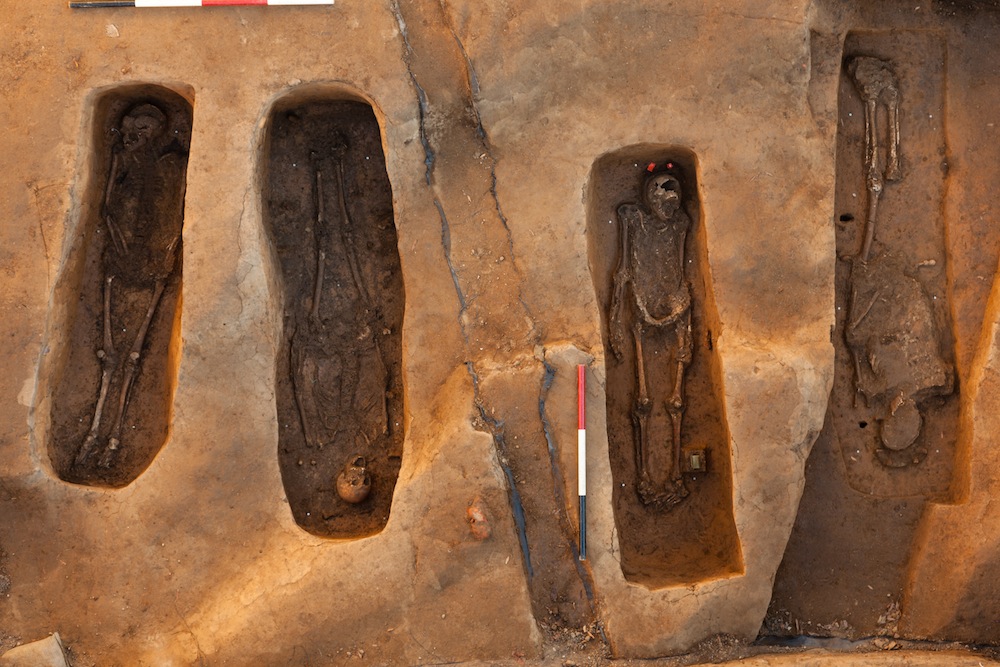
The four men were buried at the Jamestown church, the same spot where John Rolf and Pocahontas married. Two of the bodies were in similar coffins, while one of the men was buried in a simple shroud with no coffin. (Photo credit: Donald E. Hurlbert/Smithsonian Institution)
Piecing the story together
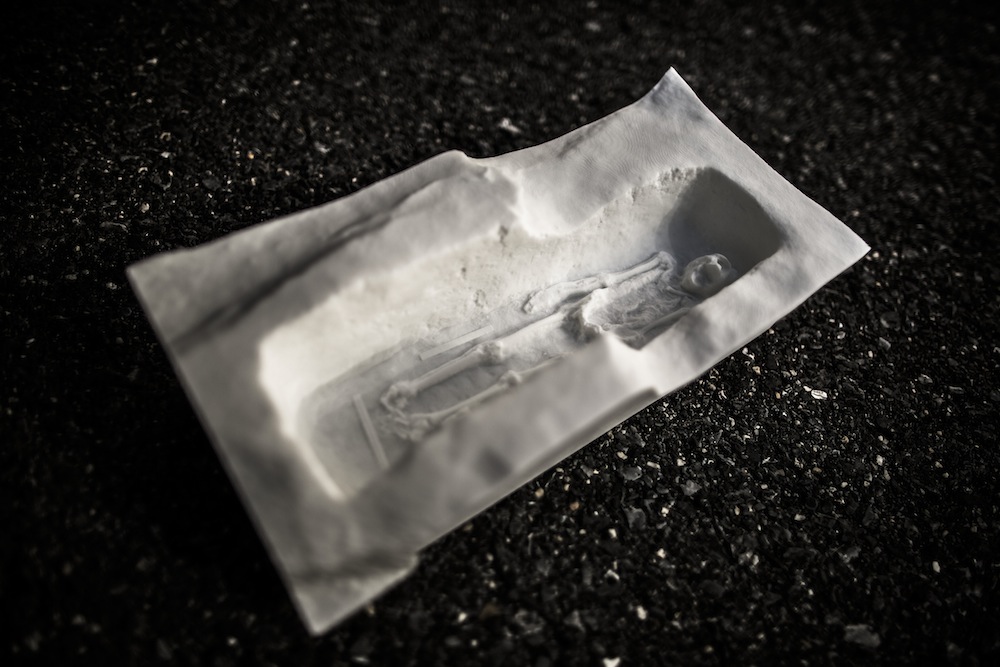
The team used genealogical data, along with artifacts from the grave and chemical analysis to identify the men. They also created a 3d-reconstruction of the grave sites for educational purposes, shown here. (Photo credit: 3d.si.edu)
Burial sites reconstructed
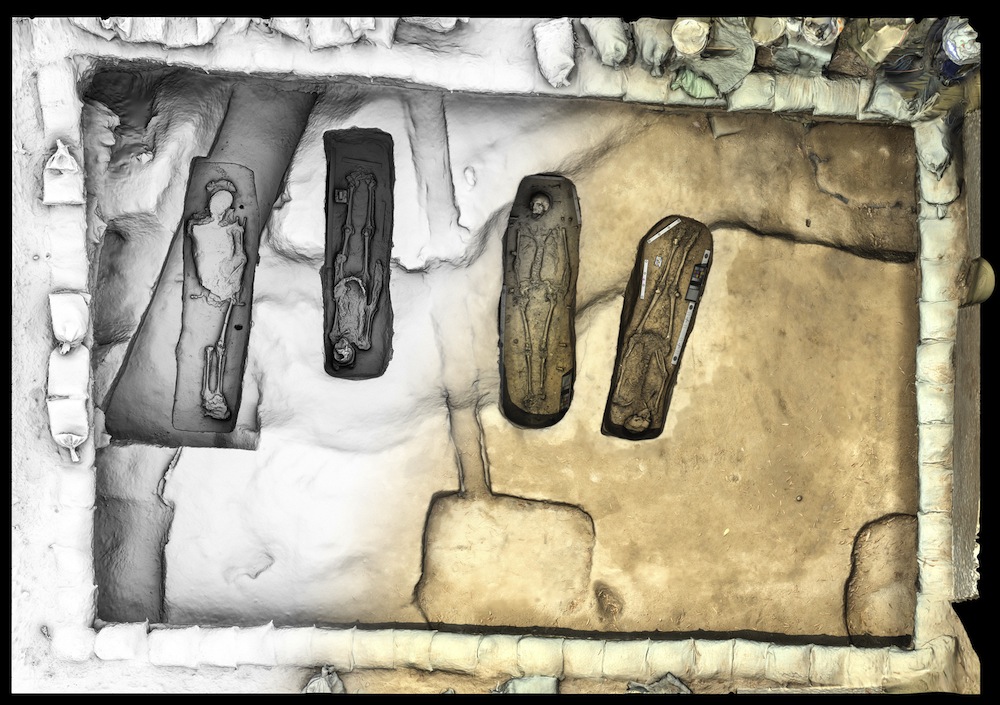
Here, a 3D reconstruction of the site where four men were buried. The site was first excavated in 2013. (Photo credit: 3d.si.edu/Donald Hurlbert)
Signature Sash
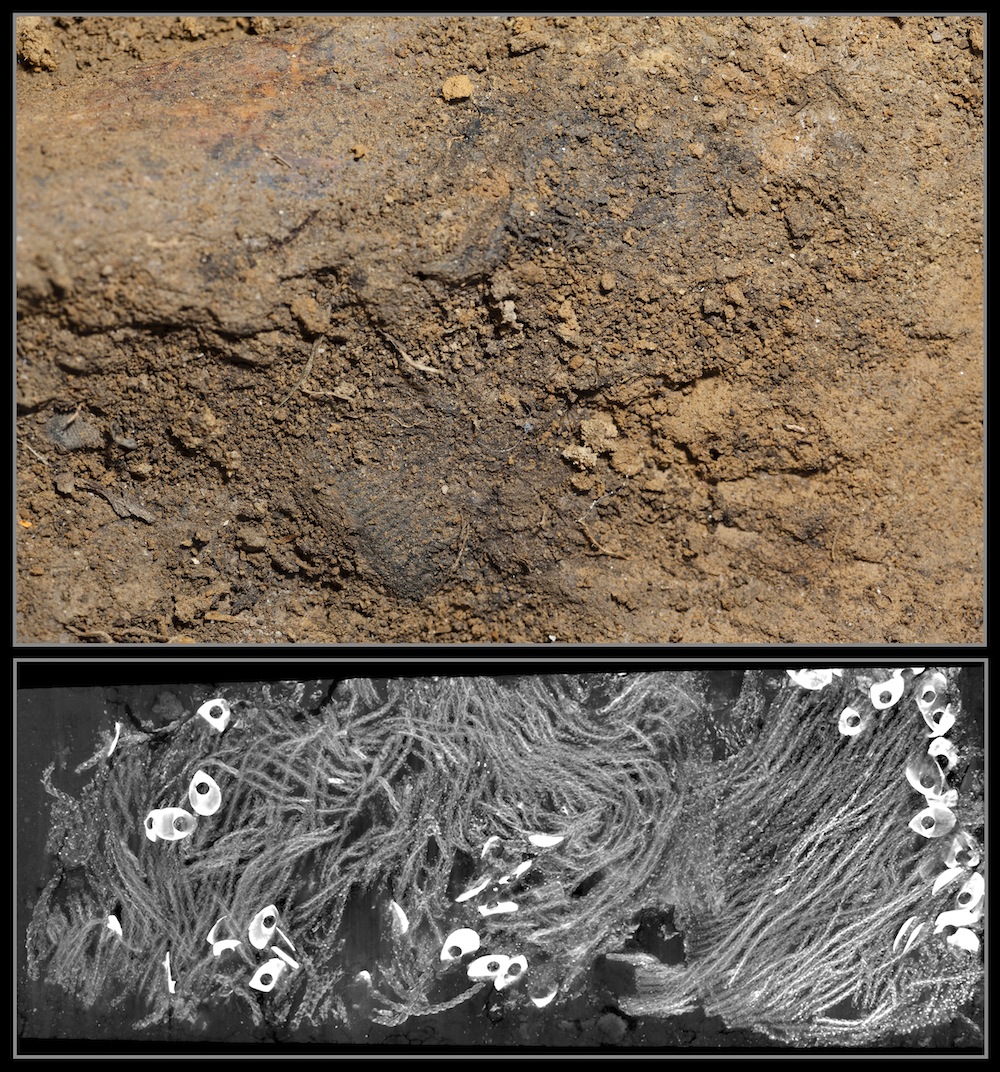
The team identified one of the men as Ferdinando Weyman, a high-status man who was related to the governor of Virginia. One line of evidence pointing to Weyman's identity was a dirt-encased sash found with the body. Under a CT scanner, the sash's ornate and distinctive frills were revealed. A man buried in a similar ornate coffin was identified as Captain William West, a nemesis of Captain John Smith. (Photo credit: (top) Donald E. Hurlbert, Smithsonian Institution | (bottom) Mark L. Riccio, Cornell BRC CT Imaging Facility)
Silver box
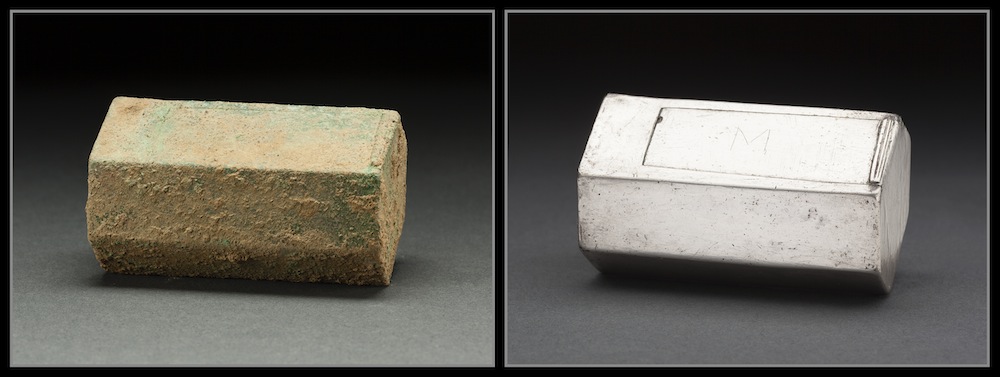
Another man was buried with a silver box, known as a reliquary, atop his grave. The reliquary contained several bone fragments and an ampulla, which was likely used to hold holy water. The man with the silver box was identified as Captain Gabriel Archer, who may have been hiding his Catholic faith. (Photo credit: Donald E. Hurlbert/Smithsonian Institution)
Leading staff
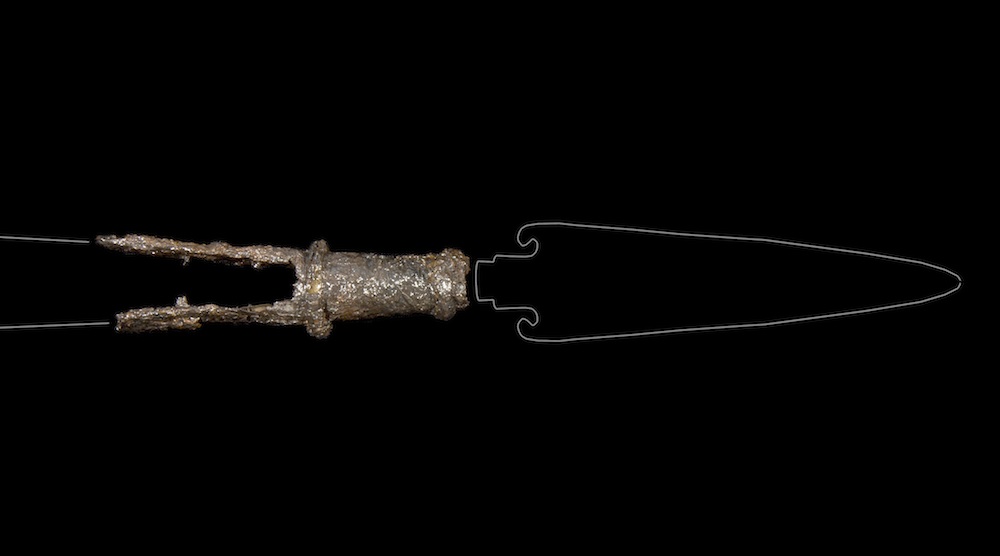
The key piece of evidence identifying Captain Archer was a fragment of his leading staff, an arrow-tipped ceremonial staff he would have clung to while evaluating his crew. (Photo: Courtesy of Jamestown Rediscovery/Preservation Virginia)
Sign up for the Live Science daily newsletter now
Get the world’s most fascinating discoveries delivered straight to your inbox.
Editor's note: Updated on May 31, 2022 to note that Pocahontas married John Rolf, not John Smith, as was previously stated.
Originally published on Live Science.

Tia is the managing editor and was previously a senior writer for Live Science. Her work has appeared in Scientific American, Wired.com and other outlets. She holds a master's degree in bioengineering from the University of Washington, a graduate certificate in science writing from UC Santa Cruz and a bachelor's degree in mechanical engineering from the University of Texas at Austin. Tia was part of a team at the Milwaukee Journal Sentinel that published the Empty Cradles series on preterm births, which won multiple awards, including the 2012 Casey Medal for Meritorious Journalism.










